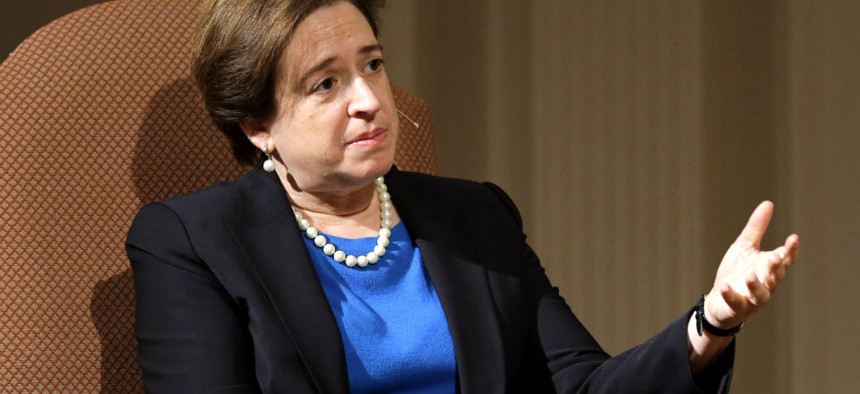Cybersecure: Supreme Court Justices Only Send Each Other Memos on Paper

U.S. Supreme Court Justice Elena Kagan Alex Brandon/AP
'It's very heavy ivory paper—it looks like it came out of the 1800s or something. But it seems to work pretty well,' Justice Kagan says.
Here's another one to add to the charming Elena Kagan anecdote files providing a wonderful glimpse into how the least transparent of the three branches of government operates.
Speaking during an interview at the Fortune Most Powerful Women Summit at the Mandarin Oriental Hotel in Washington, D.C., Wednesday night, Supreme Court Associate Justice Kagan elaborated on remarks she'd made in August about how Supreme Court justices don't use email.
"We don't to each other. I obviously do to my clerks," said Kagan about the decades-old communications technology. "But the justices themselves do not communicate by email."
"So how do you communicate?" senior editor at large Pattie Sellers of Fortuneasked.
"Well, we either talk to each other, which is not a bad thing," said Kagan, to applause from the well-heeled audience of female CEOs and business leaders.
"Or we write memos to each other," she continued.
"And you know, you have to remember that the Court is an institution where...we're not horse trading. We're not bargaining. We're reasoning. And we're trying to persuade people. And often the best way to do that is by putting things down on paper in a kind of careful and deliberate way and saying this is what I think and, and giving people an opportunity to read a memo and to think about it and to reflect on it," she said.
"And so we do a lot of our communicating by these, it looks, it's sort of 19th century. It's very heavy ivory paper—it looks like it came out of the 1800s or something. But it seems to work pretty well," she added. "And when you think about it, how many emails have you sent that you wished you could take back? So, so we're careful and deliberative."
That may be one reason the court works so well. Even though the justices "disagree a lot" and can "express our disagreement in powerful and sharp terms," they all like and respect each other, Kagan said. That sort of good faith environment of knowing "how to disagree without being disagreeable" keeps the court functioning well as an institution.
And while she didn't say it, she might as well have: Unlike Congress, which was at that very moment finally signing off on a debt deal and temporary budget plan that today allowed the government to reopen after 16 days.


